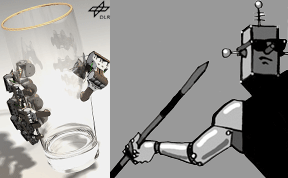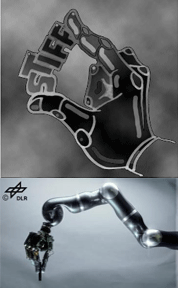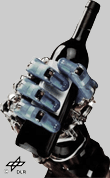Many industrial robots are much stronger than humans, but also very inflexible. For example, humans can throw objects much further and catch them much more gracefully, temporarily storing energy in elastic tendons and muscles. Such flexible actuators, however, require more sophisticated control algorithms than those used by traditional robots.
The goal of the STIFF consortium is to equip a highly biomimetic robot hand-arm system with the agility, robustness and versatility that are the hallmarks of the human motor system, by understanding and mimicking the variable stiffness paradigms that are so effectively employed by the human central nervous system. A key component of our study will be the anatomically accurate musculoskeletal modelling of the human arm and hand.
The project will develop novel methodologies to comprehend how the human arm can adapt its impedance, e.g., by changing the co-contraction level or by adapting reflex gains. The impedances of arm and hand will be investigated using powerful robot manipulators capable of imposing force perturbations. While stiffness & elasticity are currently exploited in the context of artificial laboratory tasks, we will investigate stiffness-dependent behaviour in natural tasks such as throwing a ball or inserting a peg in a hole.
Existing closed-loop system identification techniques will be extended by non-linear time-variant techniques to identify the behaviour during reaching and grasping tasks. Grasp force modulation and hand muscle activity correlations will be acquired through machine learning techniques and then transferred to the robotic system. Finally, optimization techniques gleaned and validated on the detailed biophysical model will be transferred to the variable impedance actuation of the novel biomorphic robot.





